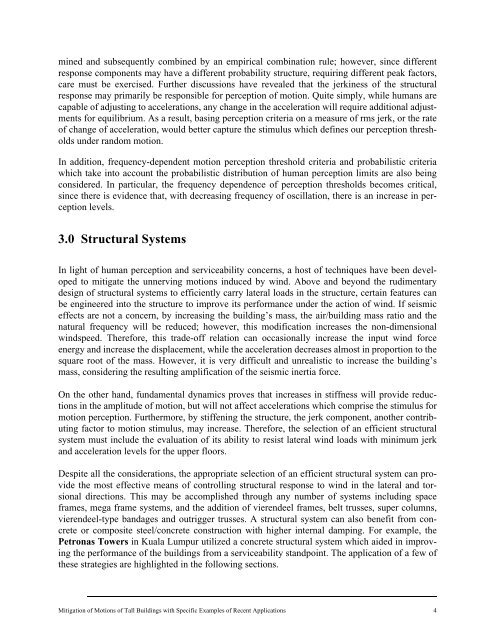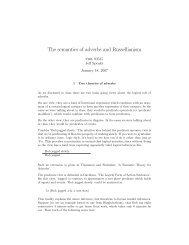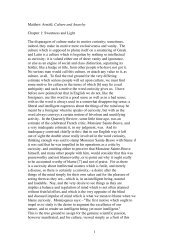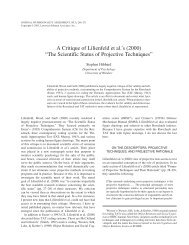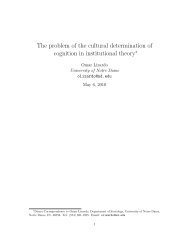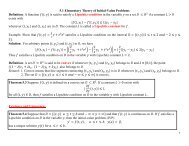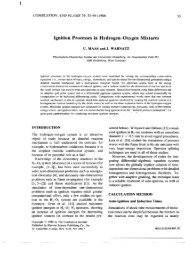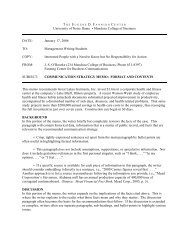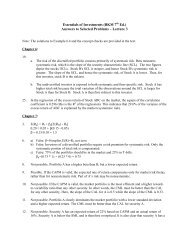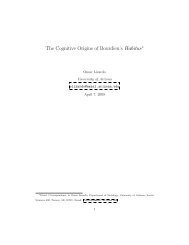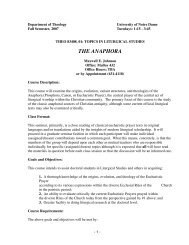Mitigation of Motions of Tall Buildings with Specific Examples of ...
Mitigation of Motions of Tall Buildings with Specific Examples of ...
Mitigation of Motions of Tall Buildings with Specific Examples of ...
You also want an ePaper? Increase the reach of your titles
YUMPU automatically turns print PDFs into web optimized ePapers that Google loves.
mined and subsequently combined by an empirical combination rule; however, since different<br />
response components may have a different probability structure, requiring different peak factors,<br />
care must be exercised. Further discussions have revealed that the jerkiness <strong>of</strong> the structural<br />
response may primarily be responsible for perception <strong>of</strong> motion. Quite simply, while humans are<br />
capable <strong>of</strong> adjusting to accelerations, any change in the acceleration will require additional adjustments<br />
for equilibrium. As a result, basing perception criteria on a measure <strong>of</strong> rms jerk, or the rate<br />
<strong>of</strong> change <strong>of</strong> acceleration, would better capture the stimulus which defines our perception thresholds<br />
under random motion.<br />
In addition, frequency-dependent motion perception threshold criteria and probabilistic criteria<br />
which take into account the probabilistic distribution <strong>of</strong> human perception limits are also being<br />
considered. In particular, the frequency dependence <strong>of</strong> perception thresholds becomes critical,<br />
since there is evidence that, <strong>with</strong> decreasing frequency <strong>of</strong> oscillation, there is an increase in perception<br />
levels.<br />
3.0 Structural Systems<br />
In light <strong>of</strong> human perception and serviceability concerns, a host <strong>of</strong> techniques have been developed<br />
to mitigate the unnerving motions induced by wind. Above and beyond the rudimentary<br />
design <strong>of</strong> structural systems to efficiently carry lateral loads in the structure, certain features can<br />
be engineered into the structure to improve its performance under the action <strong>of</strong> wind. If seismic<br />
effects are not a concern, by increasing the building’s mass, the air/building mass ratio and the<br />
natural frequency will be reduced; however, this modification increases the non-dimensional<br />
windspeed. Therefore, this trade-<strong>of</strong>f relation can occasionally increase the input wind force<br />
energy and increase the displacement, while the acceleration decreases almost in proportion to the<br />
square root <strong>of</strong> the mass. However, it is very difficult and unrealistic to increase the building’s<br />
mass, considering the resulting amplification <strong>of</strong> the seismic inertia force.<br />
On the other hand, fundamental dynamics proves that increases in stiffness will provide reductions<br />
in the amplitude <strong>of</strong> motion, but will not affect accelerations which comprise the stimulus for<br />
motion perception. Furthermore, by stiffening the structure, the jerk component, another contributing<br />
factor to motion stimulus, may increase. Therefore, the selection <strong>of</strong> an efficient structural<br />
system must include the evaluation <strong>of</strong> its ability to resist lateral wind loads <strong>with</strong> minimum jerk<br />
and acceleration levels for the upper floors.<br />
Despite all the considerations, the appropriate selection <strong>of</strong> an efficient structural system can provide<br />
the most effective means <strong>of</strong> controlling structural response to wind in the lateral and torsional<br />
directions. This may be accomplished through any number <strong>of</strong> systems including space<br />
frames, mega frame systems, and the addition <strong>of</strong> vierendeel frames, belt trusses, super columns,<br />
vierendeel-type bandages and outrigger trusses. A structural system can also benefit from concrete<br />
or composite steel/concrete construction <strong>with</strong> higher internal damping. For example, the<br />
Petronas Towers in Kuala Lumpur utilized a concrete structural system which aided in improving<br />
the performance <strong>of</strong> the buildings from a serviceability standpoint. The application <strong>of</strong> a few <strong>of</strong><br />
these strategies are highlighted in the following sections.<br />
<strong>Mitigation</strong> <strong>of</strong> <strong>Motions</strong> <strong>of</strong> <strong>Tall</strong> <strong>Buildings</strong> <strong>with</strong> <strong>Specific</strong> <strong>Examples</strong> <strong>of</strong> Recent Applications 4


